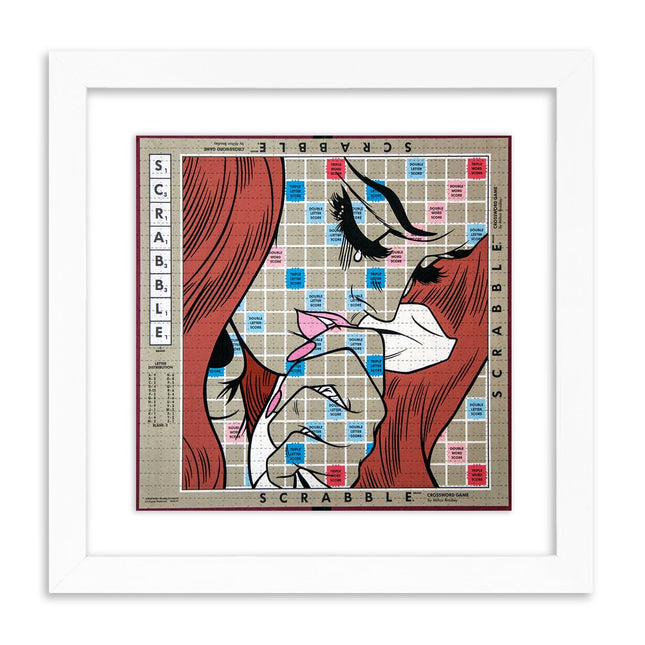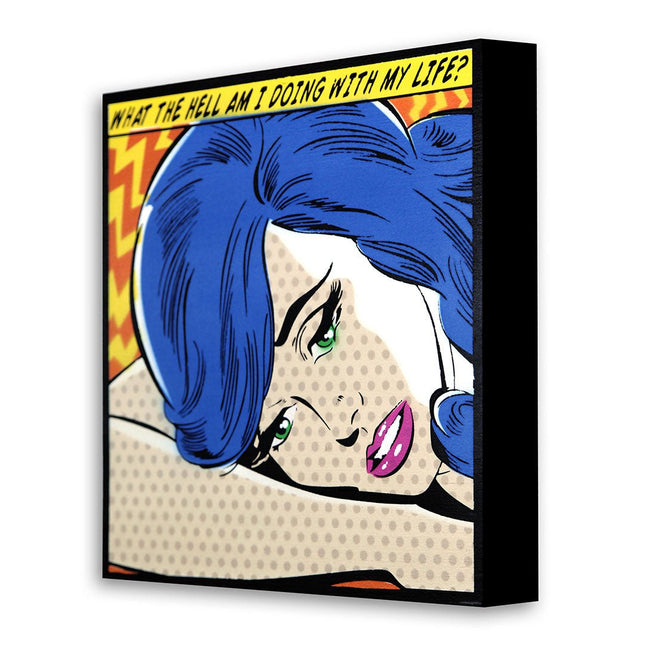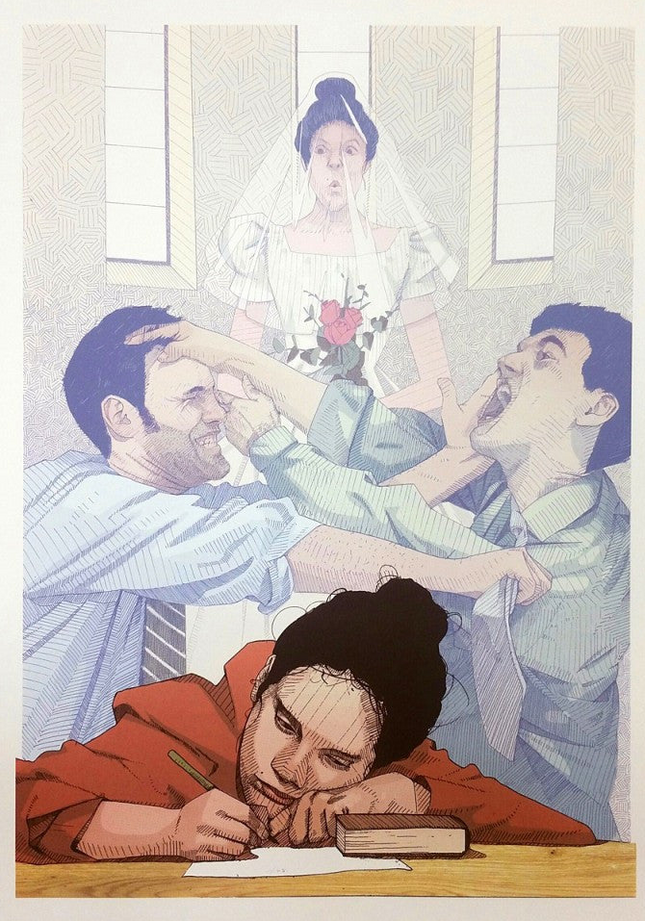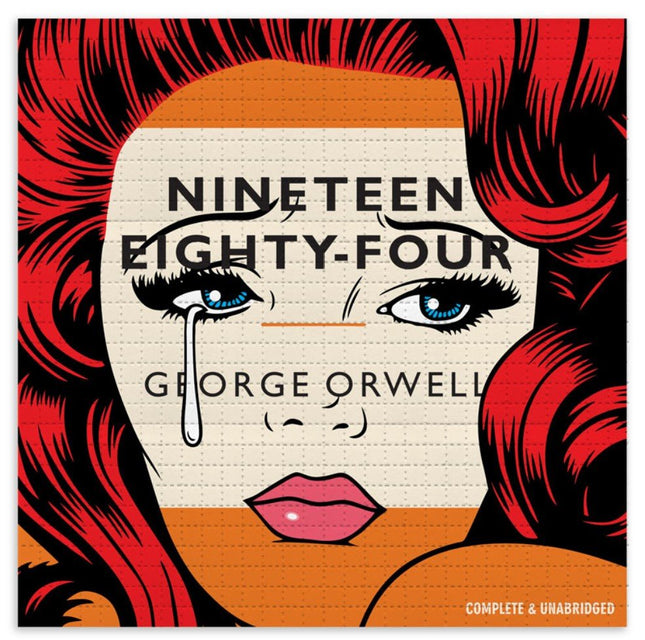
Divorce

Ben Frost Word Games Blotter Paper Archival Print by Ben Frost
Word Games Blotter Paper Limited Edition Archival Pigment Print Art on Perforated Blotter Paper by Ben Frost pop culture LSD artwork. Australian contemporary artist Ben Frost is best known for his bold, irreverent Pop Art. His instantly recognizable take on pop culture twists up everyday iconography from the world’s biggest brands. Subverting meaning and messages from the mainstream media, Frost’s scathing commentary on advertising, entertainment, and politics is both confronting and controversial. The essence of Frost’s commentary is established on the basis of subverting the meaning and the messages, promoted by the mainstream media. In other words and, as he has stated in the past: “The less you fill your mind with the trappings of advertising and bad television, the more space you have in your brain for things of value”. At the same time, his take on modern pop culture is equally compelling. Mainstream media, advertisements, and politics can be identified as some of his main fields of interest, which he utilizes and mixes up in a controversial formation. The word controversial is not used incidentally. What Ben Frost’s art is doing is, essentially, the appropriation and weaponization of imagery against the same system that gave birth to it.
$422.00

Denial- Daniel Bombardier What The Hell Am I Doing With My Life Mini HPM Wood Stencil Print by Denial- Daniel Bombardier
What The Hell Am I Doing With My Life- Mini, Part of the True Facts Mini Multiple Series Original Hand-Painted Multiple (HPM) on Wood Cradled Panel ready to hang by Denial Graffiti Street Artist Modern Pop Art. 2020 Signed & Numbered HPM Limited Edition of 20 Artwork Size 11x11 "My work speaks of impending doom and a lot of crass sinister themes, but that should not mean I desire this to happen at all. I hope my work would suggest only the opposite: to show the ridiculousness of it all and how we may find better solutions for the future." -Denial In the world of Denial, memory is important, because it is the basis of his work, as it nostalgically encourages the audience to engage with it. As a result, his art is as familiar, as it is disturbing because it reveals the most unsettling parts of society, the ones we are in a “denial” of. No matter its controversial history, graffiti is less and less viewed as a form of vandalism.
$1,068.00

Bezt- Etam Cru Girl's Dream PP Silkscreen Print by Bezt- Etam Cru
Girl's Dream PP Printers Proof Silkscreen Print by Bezt- Etam Cru Artist Proof Hand-Pulled 7-Color Screen Print on Deckled Coventry Rag Fine Art Paper Limited Edition Pop Street Artwork & Graffiti. PP Printers Proof 2015 Signed & Marked PP Limited Edition Run Hand Deckled Artwork Size 21.25x29.5 Girl's Dream PP: A Visionary Silkscreen by Bezt of Etam Cru Girl's Dream PP, a Printer's Proof silkscreen print by Bezt of Etam Cru, emerges as a striking illustration of the intersection between Street Pop Art and graffiti Artwork and the meticulous craft of screen printing. Released in 2015, this limited edition artwork is noted for its hand-pulled, 7-color process on deckled Coventry Rag fine art paper, offering a tangible texture that is both visually and tactilely engaging. The artwork, sized 21.25x29.5 inches, features a hauntingly dreamlike vista emblematic of Bezt's narrative-driven approach to art. Signature and Symbolism in Best's Work Signing and marking a Printer's Proof, as seen in Girl's Dream PP, signifies a high level of craftsmanship and the artist's direct involvement in the printmaking process. Being a PP, this print represents one of the rarest forms of a silkscreen, typically reserved for the printer's archive. Bezt's signature authenticates the piece and personally connects the artist to the collector, elevating the print's value within the Street Pop Art and graffiti Artwork community. Craftsmanship in Silkscreen Printing The silkscreen technique employed in Girl's Dream PP is a testament to Bezt's dedication to craftsmanship. The seven-color process requires precise layering and a deep understanding of color interaction to achieve the final image's depth and luminosity. The choice of Coventry Rag paper, known for its durability and rich texture, further underscores the artwork's quality and the artist's commitment to preserving the integrity of the visual narrative through superior materials. Imagery and Interpretation in Girl's Dream Bezt's Girl's Dream PP is replete with symbolism, featuring a central figure enveloped by scenes that evoke a sense of layered storytelling. The ethereal quality of the image invites interpretation, allowing viewers to delve into a narrative that straddles the line between the conscious and the subconscious. This piece illustrates Bezt's ability to capture complex emotional states and translate them into a visual language that resonates within the Street Pop Art and graffiti Artwork genres. Limited Edition and Collectibility The limited edition nature of Girl's Dream PP makes it a sought-after piece for collectors, Street Pop Art, and graffiti Artwork enthusiasts. The hand-deckled edges of the print add an element of bespoke uniqueness, ensuring that no two prints are exactly alike. As street art continues to flourish in the art market, limited editions such as this one gain significance, both as works of art and as investment pieces with the potential to appreciate over time. bezt's Influence on Contemporary Art Bezt's influence on contemporary art is amplified through works like Girl's Dream PP, which blur the boundaries between traditional printmaking and modern street art aesthetics. His contributions to the genre have helped redefine public perceptions of Street Pop Art and graffiti Artwork, positioning it as a vital and sophisticated art form. The continued interest in Bezt's prints, minimal editions such as this Printer's Proof, underscores his artistic vision's enduring appeal and relevance.
$750.00

Ben Frost 1984 Blotter Paper Archival Print by Ben Frost
1984 Blotter Paper Limited Edition Archival Pigment Print Art on Perforated Blotter Paper by Ben Frost pop culture LSD artwork. Archival Pigment Print on Perforated Blotter Paper Size: 7.5 x 7.5 Inches Release: April 19, 2021 Limited blotter editions are hand-perforated by Zane Kesey & may vary slightly from the example shown. The essence of Frost’s commentary is established on the basis of subverting the meaning and the messages, promoted by the mainstream media. In other words and, as he has stated in the past: “The less you fill your mind with the trappings of advertising and bad television, the more space you have in your brain for things of value”. At the same time, his take on modern pop culture is equally compelling. Mainstream media, advertisements, and politics can be identified as some of his main fields of interest, which he utilizes and mixes up in a controversial formation. The word controversial is not used incidentally. What Ben Frost’s art is doing is, essentially, the appropriation and weaponization of imagery against the same system that gave birth to it.
$529.00





